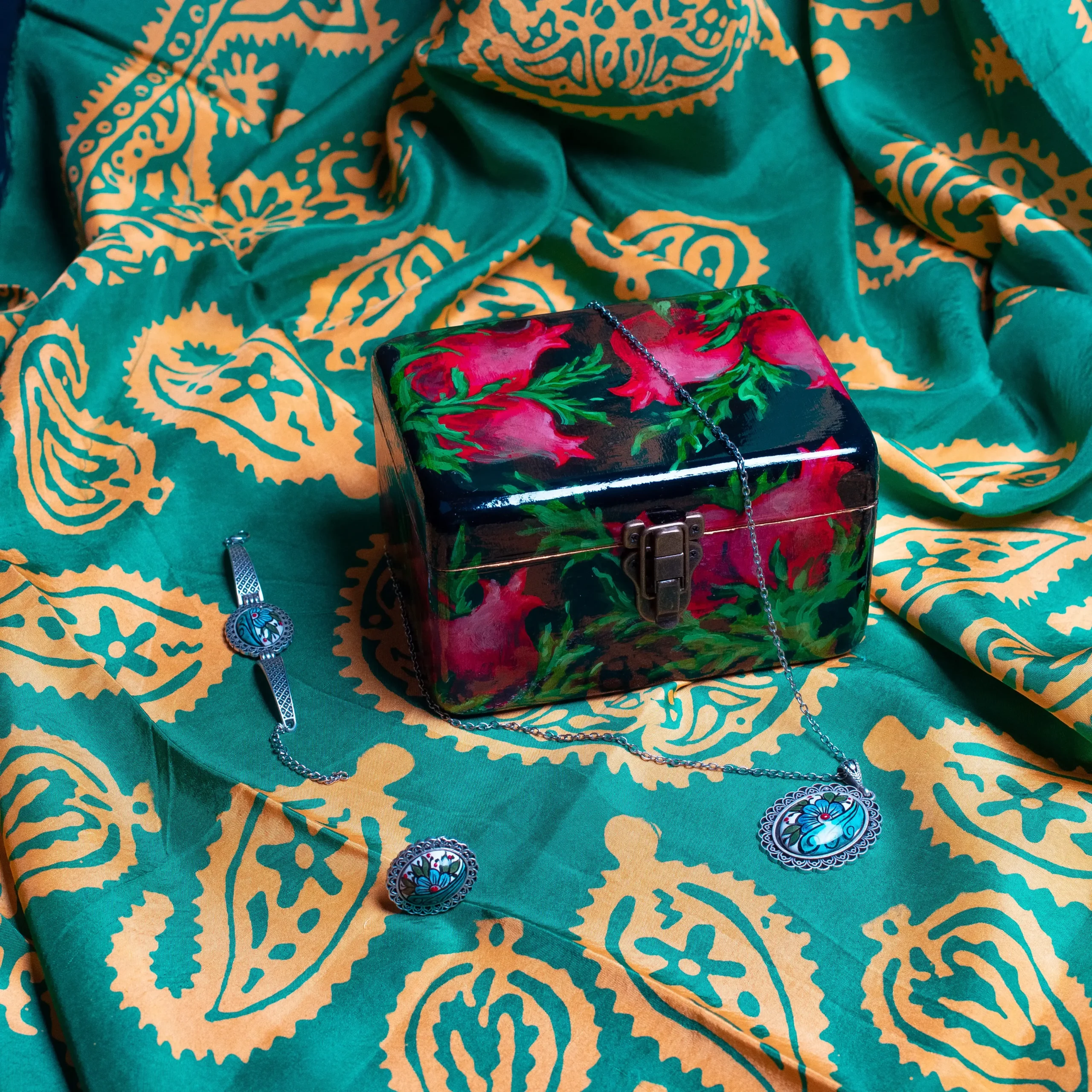

Tradition Meets Technology: Hand-Painted vs. Screen-Printed Kalamkari Sarees
In the vibrant world of Indian textiles, the Kalamkari sarees stands out as a testament to artistic brilliance and cultural heritage. With its intricate motifs and rich history, the Kalamkari sarees has captivated fashion enthusiasts for generations. Today, we delve into the age-old debate: Hand-Painted Kalamkari vs. Screen-Printed Kalamkari, to help you make an informed choice when adding this exquisite garment to your wardrobe.
Hand-Painted Kalamkari Sarees
Hand-painted Kalamkari sarees epitomize traditional craftsmanship and individuality. Each saree is a masterpiece, painstakingly crafted by skilled artisans using natural dyes and a fine-tipped pen known as a ‘kalam.’ The process involves intricate detailing and precision, resulting in unique designs that tell stories of ancient mythology and folklore.
How to Identify a Hand-Painted Kalamkari Saree
1. Look for irregularities: Hand-painted sarees often exhibit slight variations in color and design due to the manual process.
2. Feel the texture: Hand-painted sarees have a distinct texture, with paint absorbed into the fabric rather than sitting on top.
3. Examine the reverse side: Authentic hand-painted sarees show the design on both sides, albeit with variations in intensity.
Pros and Cons of Hand-Painted Kalamkari Sarees
Pros:
– Exquisite craftsmanship and attention to detail.
– Unique designs with a personal touch.
– Use of natural dyes adds to the eco-friendliness of the garment.
Cons:
– Higher cost due to labor-intensive process.
– Requires delicate care to preserve the intricate artwork.
Screen-Printed Kalamkari Sarees
Screen-printed Kalamkari sarees offer a more accessible and affordable alternative to hand-painted ones. This method involves transferring designs onto the fabric using screens and synthetic dyes. While lacking the individuality of hand-painted sarees, screen-printed versions still capture the essence of Kalamkari artistry.
How to Identify a Screen-Printed Kalamkari Saree
1. Uniformity in design: Screen-printed sarees typically exhibit uniformity in design and color.
2. Smooth texture: The design sits on the surface of the fabric, resulting in a smoother texture compared to hand-painted sarees.
3. Absence of design on the reverse side: Unlike hand-painted sarees, screen-printed ones often do not show the design on the reverse side.
Pros and Cons of Screen-Printed Kalamkari Sarees
Pros:
– More affordable than hand-painted sarees.
– Consistent quality and design.
– Easier to mass-produce, making them readily available.
Cons:
– Lack the individuality and character of hand-painted sarees.
– Synthetic dyes may not be as eco-friendly as natural dyes.
Which Type of Kalamkari Saree is Better?
Ultimately, the choice between hand-painted and screen-printed Kalamkari sarees boils down to personal preference and budget. If you value craftsmanship, uniqueness, and are willing to invest in a piece of wearable art, then hand-painted sarees are the way to go. On the other hand, if affordability and accessibility are your priorities, screen-printed sarees offer a more practical option without compromising on style.
Conclusion
At Woodloom, we celebrate the rich tapestry of Indian textiles by offering a curated collection of both hand-painted and screen-printed Kalamkari sarees. Whether you’re drawn to the intricate detailing of hand-painted sarees or the accessibility of screen-printed ones, we invite you to explore our range and find the perfect Kalamkari masterpiece to adorn your wardrobe.
